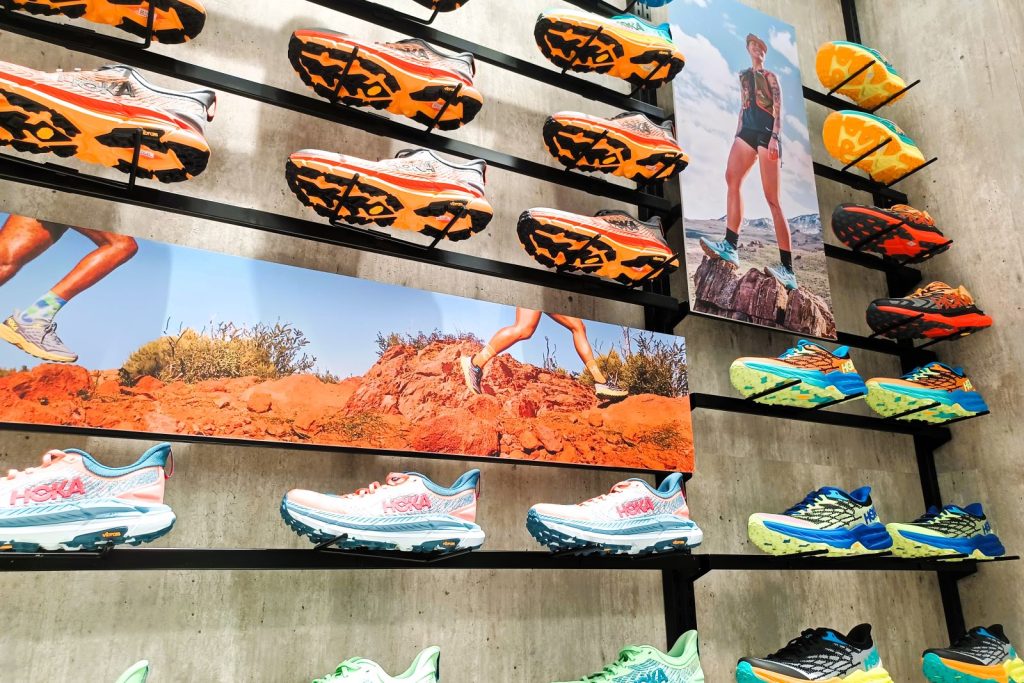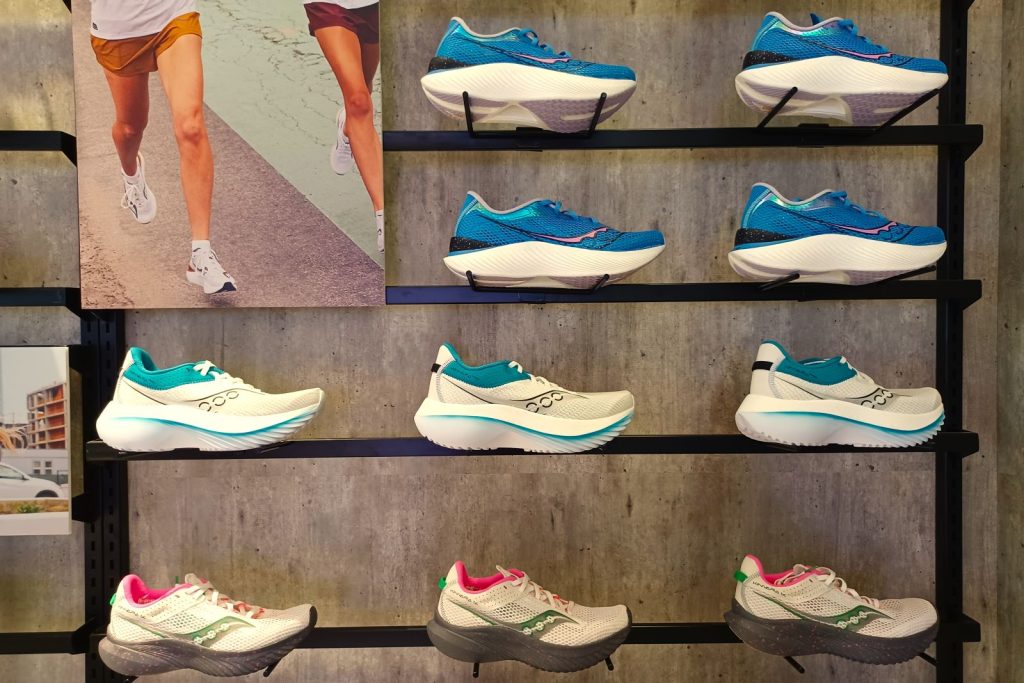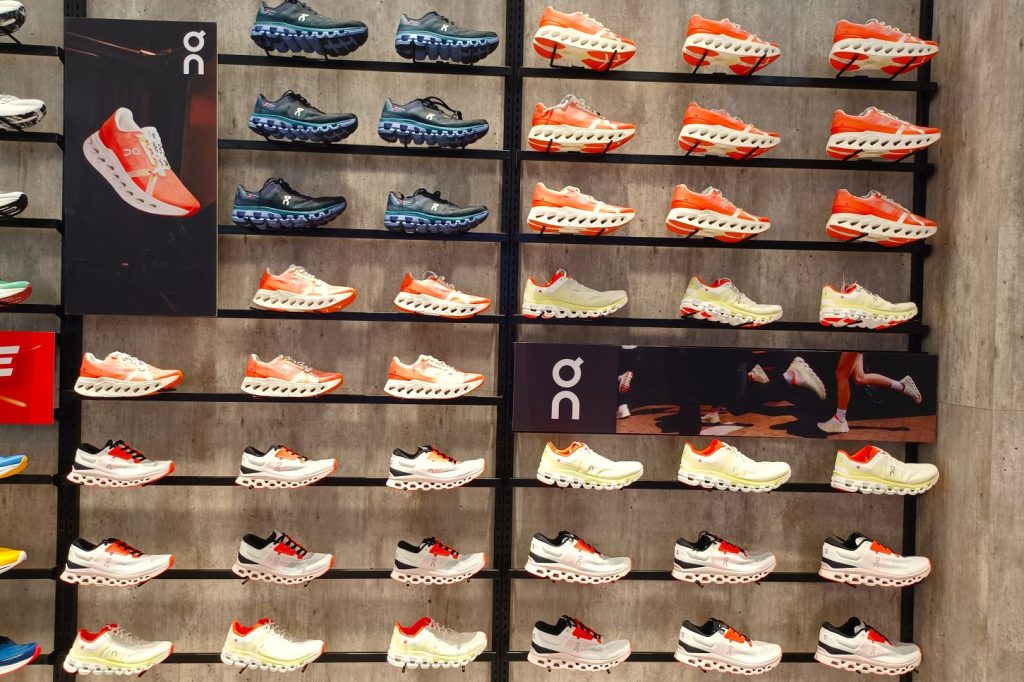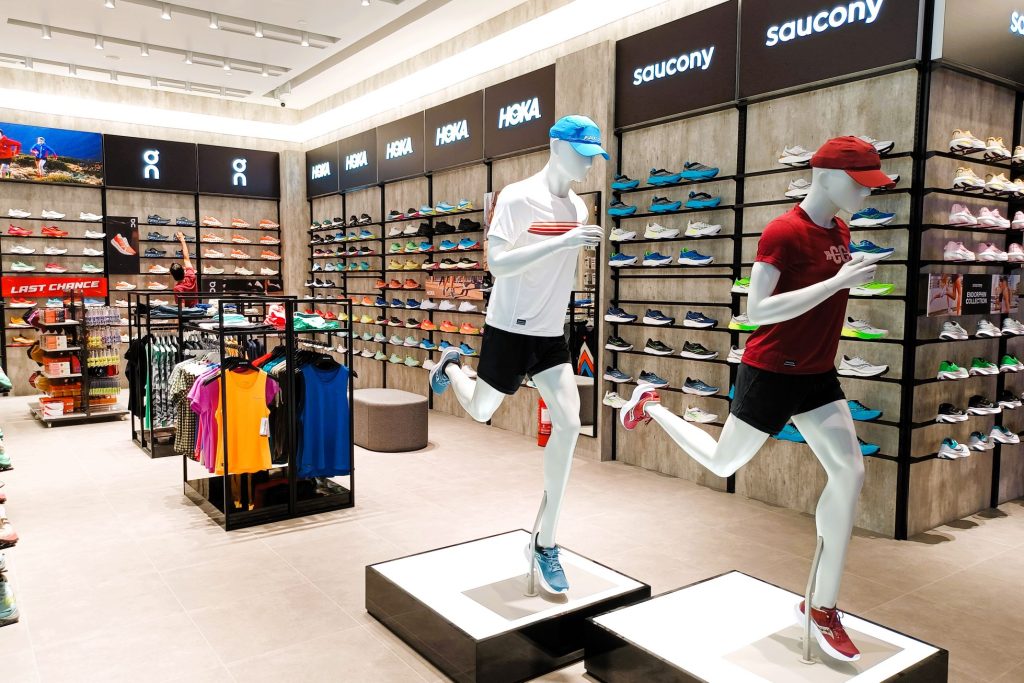Running shoes are the foundation of a good running experience. They provide comfort, support, and protection for your feet as you pound the pavement. But with so many options available, choosing the right pair can feel overwhelming. Here’s a guide to help you navigate the world of running shoes and find the perfect fit for your needs:

Consider Your Running Style:
- Footstrike: How your foot lands when you run. Neutral shoes work for most runners. Stability shoes offer extra support for those who overpronate (foot rolls inward). Motion control shoes provide maximum support for severe overpronation.
- Terrain: Trail running? Look for shoes with aggressive treads for better traction on uneven surfaces. Road running? Standard road shoes offer a smooth ride.
- Distance: Running short distances? Lightweight shoes prioritize speed. Tackling marathons? Cushioned shoes offer better impact absorption.

Analyze Your Foot:
- Gait Analysis: Getting a gait analysis at a specialty store like Rev Runnr can reveal your pronation pattern and recommend suitable shoes.
- Foot Size and Width: Get both feet measured at the end of the day, when they’re slightly swollen. Aim for a thumb-width space between your toes and the shoe’s end. Don’t forget to account for width! Some brands, like Saucony, offer wide-fit options.

The Shoe Breakdown:
- Cushioning: This is the midsole foam that absorbs impact. Highly cushioned shoes like Hoka One One are great for long runs, while neutral shoes often have a thinner midsole for a more responsive feel.
- Upper: The upper part of the shoe that wraps your foot. Look for breathable materials that conform to your foot shape.
- Outsole: The bottom of the shoe that provides traction. Look for different tread patterns depending on your running surface.
Fit is King:
Once you’ve narrowed down your options, try on shoes in-store! Here are some golden rules:
- Snug but not Tight: The shoe should hug your foot without pinching or feeling loose.
- Heel Lock: Your heel should feel secure, with minimal slippage.
- Toebox Space: There should be enough room for your toes to wiggle comfortably.

Trying on Shoes:
- Wear the socks you plan to run in.
- Walk and jog in the shoes to assess comfort and flexibility.
- Pay attention to any pressure points or rubbing.

Examples:
- Neutral Runners: Saucony Kinvara offers a responsive, lightweight feel.
- Cushioned Runners: Hoka One One Bondi provides maximum impact absorption.
- Stability Runners: Rev Runnr recommends the Brooks Adrenaline for mild overpronation.

Remember: The perfect running shoe is the one that feels comfortable and supportive for your specific needs. Don’t be afraid to try on different brands and styles to find your perfect match!
HOKA Unveils New Cielo X1: A Road Racing Shoe Built for Speed and Performance







